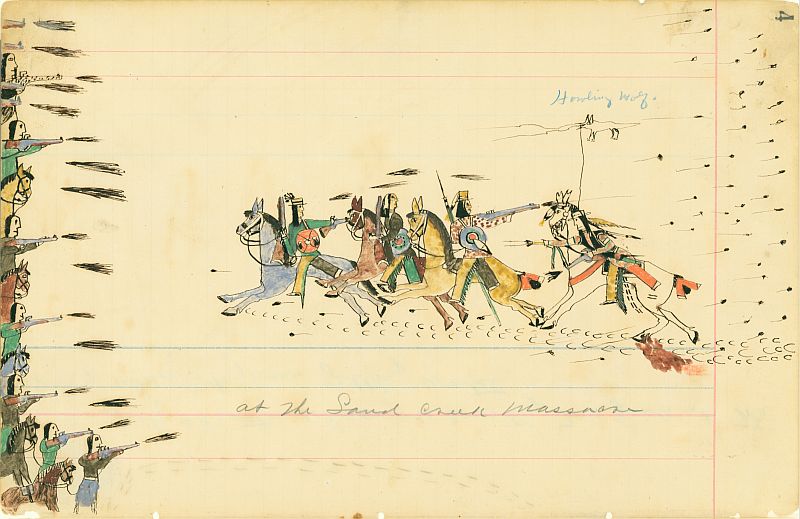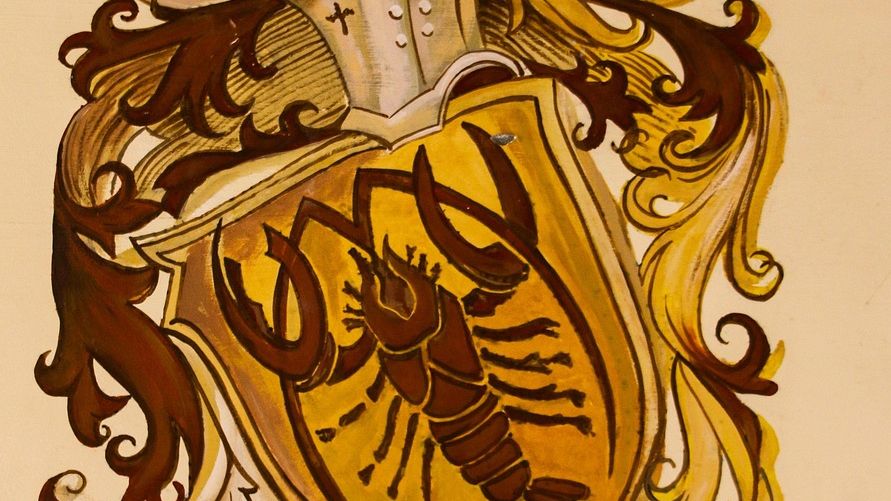The pages of history are often filled with tales of triumph and progress, but what about the stories that lurk in the shadows? The ones that are rarely discussed in classrooms yet have shaped the fabric of the nation. The United States, like any other country, has its share of dark chapters that are often glossed over or omitted entirely from educational narratives. Here are 15 such events that deserve a closer look.
The Trail of Tears

The Trail of Tears is a haunting reminder of the forced relocation of Native American tribes, primarily the Cherokee, Creek, and Seminole, from their ancestral lands. This tragic event unfolded in the 1830s under the Indian Removal Act, signed by President Andrew Jackson. The journey was a grueling one, marked by death, disease, and despair, as thousands of Native Americans were pushed westward. It’s estimated that about 4,000 Cherokee lost their lives during this forced march. The Trail of Tears is not just a story of relocation but a tale of survival against overwhelming odds, a chapter that reflects the darker side of American expansionism.
The Internment of Japanese Americans

In the wake of Pearl Harbor, fear and suspicion gripped the nation, leading to one of the most significant violations of civil liberties in U.S. history. Executive Order 9066 authorized the internment of approximately 120,000 Japanese Americans, many of whom were U.S. citizens. Families were uprooted, businesses were lost, and communities were torn apart. The internment camps, often located in desolate areas, were a stark reminder of the prejudice that fueled this dark chapter. Although the U.S. government later apologized and offered reparations, the scars of this injustice remain etched in the memories of those who lived through it.
The Tulsa Race Massacre

The Tulsa Race Massacre of 1921 is a devastating episode of racial violence that decimated the prosperous Black community of Greenwood, known as “Black Wall Street.” A false accusation against a Black teenager ignited a white mob’s fury, leading to two days of chaos, destruction, and death. Hundreds of Black residents were killed, and thousands were left homeless as homes and businesses were razed. For decades, this horrific event was omitted from history books, a silence that speaks volumes about the racial tensions that still simmer beneath the surface in America.
The Sand Creek Massacre

In 1864, the Sand Creek Massacre unfolded as a brutal attack on a peaceful encampment of Cheyenne and Arapaho Indians by the Colorado U.S. Volunteer Cavalry. Despite assurances of safety, the troops launched a surprise attack, killing around 150 Native Americans, mostly women and children. This massacre was part of a broader campaign of violence against Native Americans and led to heightened tensions between tribes and the U.S. government. It’s a chilling reminder of the disregard for Indigenous lives and the lengths to which expansionist policies were pursued.
The Forgotten History of Lynching

Lynching in America was not just an act of violence but a tool of terror used to maintain racial hierarchy. From the late 19th century through the mid-20th century, thousands of African Americans were lynched, often for perceived transgressions or simply for being Black. These public spectacles drew large crowds and were a grim reminder of the racial animosity that permeated society. The legacy of lynching continues to influence discussions on racial justice today, highlighting the need for reconciliation and understanding.
The Forced Sterilization of Marginalized Groups

The eugenics movement in the U.S. led to the forced sterilization of thousands deemed “unfit” to reproduce, disproportionately affecting marginalized groups. People with disabilities, the mentally ill, and people of color were targeted in an attempt to “improve” society. This pseudoscientific belief in controlling reproduction left a lasting impact on those who suffered its consequences. The forced sterilization programs are a sobering reminder of the dangers of discrimination masquerading as science.
The My Lai Massacre

The My Lai Massacre of 1968 is a dark chapter in the Vietnam War, where U.S. soldiers killed hundreds of unarmed South Vietnamese civilians. This atrocity was initially covered up but later exposed, sparking outrage and protests across the United States. The massacre underscored the moral complexities of war and the consequences of dehumanizing the enemy. It remains a poignant example of the horrors of conflict and the importance of accountability in military operations.
The Assassination of Civil Rights Leaders

The 1960s were a turbulent time for the civil rights movement, marked by the assassinations of leaders like Martin Luther King Jr. and Malcolm X. These tragic losses were not just personal but societal, as they struck fear into the hearts of those fighting for equality. The assassinations were symptomatic of the broader racial tensions and systemic racism that plagued the nation. Despite these setbacks, the legacies of these leaders continue to inspire movements for justice and equality today.
The Red Scare and McCarthyism

The Red Scare of the 1950s, led by Senator Joseph McCarthy, was characterized by a frenzied hunt for alleged communists within the U.S. government and other sectors. This era of paranoia led to the persecution of many innocent individuals, who lost their jobs and reputations. McCarthyism serves as a cautionary tale about the dangers of fear-mongering and the erosion of civil liberties in the name of national security. It’s a stark reminder of the impact of hysteria on society and the importance of safeguarding democratic principles.
The Opioid Epidemic

The opioid epidemic is a contemporary crisis with roots in aggressive pharmaceutical marketing and the downplaying of addiction risks. Millions of Americans have succumbed to addiction, leading to a public health emergency characterized by rising overdose deaths. This epidemic has disproportionately affected marginalized communities, exacerbating issues like crime and homelessness. The opioid crisis highlights the urgent need for comprehensive healthcare solutions and underscores the importance of addressing the root causes of addiction.
The Treatment of LGBTQ+ Individuals

LGBTQ+ individuals have long faced discrimination and persecution in the United States, from the criminalization of same-sex relationships to the stigma surrounding HIV/AIDS. The fight for LGBTQ+ rights has been marked by significant milestones, such as the Stonewall Riots of 1969, which ignited the modern LGBTQ+ rights movement. Despite progress, challenges remain, and the history of LGBTQ+ individuals is an essential part of American history that continues to unfold.
The War on Drugs

Initiated in the 1980s, the War on Drugs has had a profound impact on American society, particularly among communities of color. Policies focused on criminalization rather than treatment have led to mass incarceration and the stigmatization of addiction. This approach has been criticized for perpetuating systemic racism and failing to address the underlying causes of substance abuse. The War on Drugs remains a contentious issue, highlighting the need for reform and a more compassionate approach to addiction.
The Flint Water Crisis

The Flint water crisis, which began in 2014, exposed the negligence and failure of government officials to protect the health of residents in Flint, Michigan. The predominantly Black community was subjected to contaminated drinking water, leading to severe health consequences, especially for children. The crisis serves as a stark reminder of the importance of environmental justice and the need for accountability in governance. It’s a chapter that underscores the intersection of race, poverty, and public health.
The Exploitation of Native American Resources

The exploitation of Native American resources is a recurring theme in U.S. history, as Indigenous peoples have often been denied their rights and sovereignty. From mineral extraction to the commodification of sacred lands, these actions have led to economic and cultural devastation. The U.S. government’s history of broken treaties and promises has fueled ongoing struggles for land rights and environmental protection. Indigenous activists continue to fight for their heritage and the preservation of their resources.
The Legacy of Slavery and Jim Crow Laws

The legacy of slavery and the subsequent Jim Crow laws have left an indelible mark on American society. Following the Civil War, systemic discrimination persisted through laws enforcing racial segregation and disenfranchisement. These injustices continue to influence issues of racial inequality and injustice today. The struggle for civil rights and social justice remains ongoing, as activists work tirelessly to dismantle the structures of racism and promote equality for all Americans.
These dark chapters in U.S. history are a testament to the complexities of the nation’s past. They remind us of the importance of acknowledging and learning from these events to build a more just and equitable society. Understanding these histories is crucial to ensuring that the mistakes of the past are not repeated.



